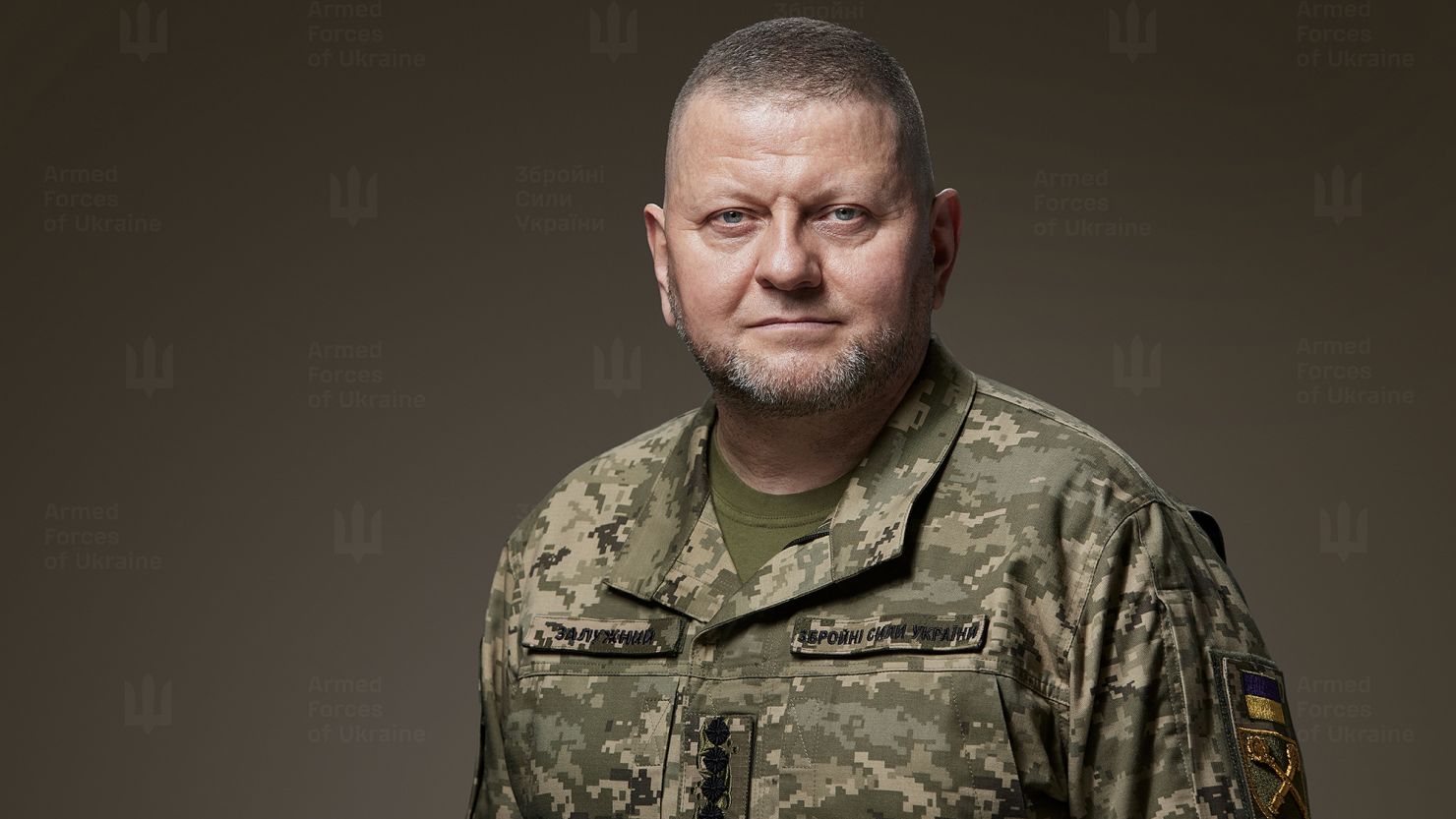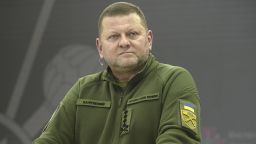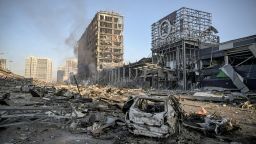Editor’s Note: Valerii Zaluzhnyi is the former Commander-in-Chief of the Armed Forces of Ukraine. This article was written before his dismissal. The views expressed in this commentary are his own. Read a detailed CNN analysis of this article here, and the full essay here.
The Second World War drew to a close almost 80 years ago, but its legacy in defining the strategic vision of war persists to this day.
Whatever remarkable advances there have been in the fields of aviation, missile technology and space-based assets, for instance, the concept of victory remains unchanged: to destroy the enemy and to capture or liberate territory.
And yet, each war is unique.
And there is no greater challenge facing the military commander, in my opinion, than understanding – in good time – how each war is shaped differently.
Firstly, by technological progress, which determines the development of weapons and equipment.
And, secondly, by political conditions at home and abroad, and the economic environment.
Victory needs a unique strategy and follows a unique logic.
It is well known by now that a central driver of this war is the development of unmanned weapons systems.
They are proliferating at a breathtaking pace and the scope of their applications grows ever wider.
Crucially, it is these unmanned systems – such as drones – along with other types of advanced weapons, that provide the best way for Ukraine to avoid being drawn into a positional war, where we do not possess the advantage.
But while mastery of such technologies is key, it is not the only factor influencing current strategy.
We must contend with a reduction in military support from key allies, grappling with their own political tensions.
Our partners’ stocks of missiles, air defense interceptors and ammunition for artillery is becoming exhausted, due to the intensity of hostilities in Ukraine, but also from a global shortage of propellant charges.
Russia, taking note of how developments in the Middle East have distracted international attention, might seek to provoke further conflicts elsewhere.
The weakness of the international sanctions’ regime means Russia, in partnership with certain others, is still able to deploy its military-industrial complex in pursuit of a war of attrition against us.
We must acknowledge the significant advantage enjoyed by the enemy in mobilizing human resources and how that compares with the inability of state institutions in Ukraine to improve the manpower levels of our armed forces without the use of unpopular measures.
Finally, we remain hamstrung by the imperfections of the regulatory framework in our country, as well as the partial monopolization of the defense industry. These lead to production bottlenecks – in ammunition, for instance – which further deepen Ukraine’s dependence on its allies for supplies.
Our combat experience, particularly since 2022, is unique – but in the interests of victory, we must constantly find new ways and new capabilities to help us gain an advantage over the enemy.
Perhaps the number one priority here is mastery of an entire arsenal of (relatively) cheap, modern and highly effective, unmanned vehicles and other technological means.
Already such assets allow commanders to monitor the situation on the battlefield in real time, day and night, and in all weather conditions.
But not only that.
They provide real-time intelligence allowing the adjustment of fire around the clock, without pause – giving us the ability to deliver high-precision strikes against enemy targets in forward positions and in depth.
In short, this means nothing less than the wholesale redesign of battlefield operations – and the abandoning of outdated, stereotypical thinking.
New operations might include digital field creation, radio-electronic environment control, or a combined operation using attack drones and cyber assets.
Such operations will be coordinated and conducted under a single concept and plan.
Crucially, the aim will not always be solely combat in focus.
It might seek to reduce the economic capabilities of the enemy, or to isolate, or wear him down.
Attack operations can have psychological objectives.
That said, for the time being, the priority remains improving the situation on the battlefield.
And here, technology boasts an undoubted superiority over tradition.
The remote control of these assets means fewer soldiers in harm’s way, thus reducing the level of human losses.
It offers the opportunity to reduce (though certainly not eliminate) reliance on heavy materiel in combat missions and the overall conduct of hostilities.
And it opens up the possibility of inflicting sudden massive strikes against critical infrastructure facilities and communications hubs without deploying expensive missiles or manned aircraft.
Further advantages will become clear over time, though of course the enemy will all the time be looking for ways to defend against such operations and to seize or regain the initiative.
So, defense systems too need constant improvement, as do countermeasures targeting the use of new technology by the enemy.
The challenge for our armed forces cannot be underestimated.
It is to create a completely new state system of technological rearmament.
Taking everything into account at this moment, we think the creation of such a system could be achieved in five months.
Our partners are of the same view.
This time will be spent creating an appropriate organizational structure, filling and equipping positions, providing training and support, building out the supporting infrastructure and logistics, and developing a doctrinal framework.
In conclusion, in 2024, we must focus our main efforts in three areas.
Creating a system to provide our armed forces with high-tech assets.
Introducing a new philosophy of training and warfare which takes account of restrictions in assets and how they can be deployed.
And mastering new combat capabilities as soon as possible.
We already possess capabilities to eliminate the enemy and ensure the existence of statehood.
Our goal must be to seize the moment – to maximize our accumulation of the latest combat capabilities, which will allow us to commit fewer resources to inflicting maximum damage on the enemy, to end the aggression and protect Ukraine from it in the future.
Read a detailed CNN analysis of Valerii Zaluzhnyi’s opinion piece here, and the full essay here.


